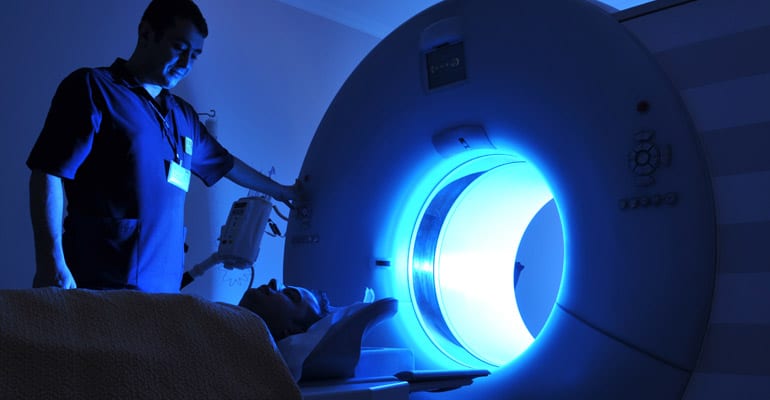Straight Talk about Mesothelioma, a blog series created by Michael T. Milano, M.D., Ph.D., a radiation oncology specialist, as a resource for mesothelioma patients and their loved ones.
Mesothelioma is a serious disease, and specialists do not make the diagnosis lightly. If your doctor determines that mesothelioma is a possibility, he or she will order diagnostic tests to confirm the diagnosis of mesothelioma. Here is an overview of the different types of tests likely to be performed, though not all patients will have all these tests. They include imaging tests, blood tests, and fluid and tissue tests.
Imaging Tests
There are many different types of imaging tests. Basic x-rays take a snapshot of the inside of your body, while the more sophisticated CT scans, PET scans, and MRIs produce more detailed, cross-section images of your body, including images of the soft tissue. These images help your specialist pinpoint the exact location of the cancer, and can reveal whether or not it has spread from its original location. Your specialist will be able to show you the images produced and can point out the specific areas of concern.
Blood Tests
With any cancer diagnosis, physicians will order basic blood tests to help gauge your health. These include blood counts, blood electrolytes, blood sugar, and liver function tests. None of these tests will diagnose mesothelioma, but rather help the physician determine if there are other potentially relevant medical conditions. People with mesothelioma often have higher levels of the protein osteopontin and other substances in their blood which can be detected with a MesoMark® test. The presence of these substances is not a guarantee of the presence of mesothelioma, but it is one indicator.
Fluid and Tissue Tests
In order for a specialist to make a definitive diagnosis of mesothelioma, he must remove some cells from the body and look at them under a microscope in order to confirm the presence of cancer cells. This can be done either by removing some of the fluid that often builds up around cancerous areas, or, if no cancer cells are detected in the fluid, actual tissue can be taken directly from the site of the tumor. This is done using a hollow biopsy needle specially designed for this purpose. The pictures from the imaging tests will help your doctor know precisely where to insert the biopsy needle.
The Final Test
All fluid and tissue samples get sent to a pathology lab, where a pathologist uses an electron microscope and other specialized equipment to perform DNA microarray and other analyses to determine once and for all that the cancer is, in fact, mesothelioma.










